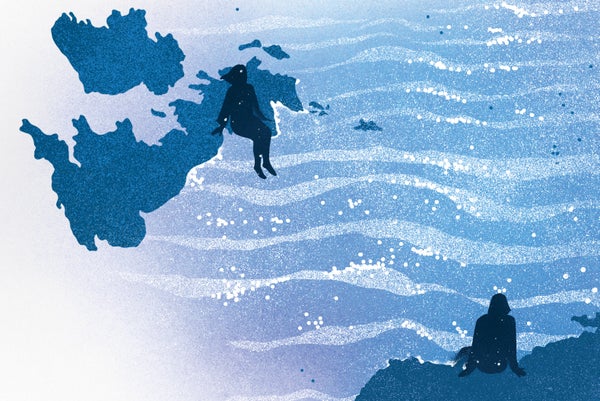On supporting science journalism
If you're enjoying this article, consider supporting our award-winning journalism by subscribing. By purchasing a subscription you are helping to ensure the future of impactful stories about the discoveries and ideas shaping our world today.
2NaCl(aq) + 2H2O(l) → H2(g) + Cl2(g) + 2NaOH(aq)
I’ve rarely seen the sea so calm—
the weather almost balmy
as though the world knows
wind would blow me apart
tear the bonds already stretched
by atoms straining, seeking
the resistance of your arms
holding me together—
I tell you this—send it as text
across the waves
from Scotland to Norwegian coast
wondering if this is the one
that will weigh the radio waves
between us into wire
powered by the constant battery
of good mornings and good nights—
So that on days like this
when we both sit
dangling two feet into briny water
two million feet apart
we might become electrodes—
conductors in the beaker of the North Sea
attracting orchestras of ions
across aeons of ocean
until—
for one electrifying instant—
I feel the tingle of the touch
of electrons from the chlorine
in the salt of the sea that
kissed your feet
tightening me back into shape—
and I am Venus
born from the foam
of the telltale bubbles around me.
